Future challenges for the NBN: the 13th Annual Conference of the National Biodiversity Network, 15th November 2013
Against a backdrop of reduced Government funding, changes in environmental policies and an increasing awareness of the pressures on the natural world, the organisations involved in the National Biodiversity Network have a need to understand how to respond to those changes. This Conference was designed to get feedback from a range of NBN partners, in order to judge this issue.
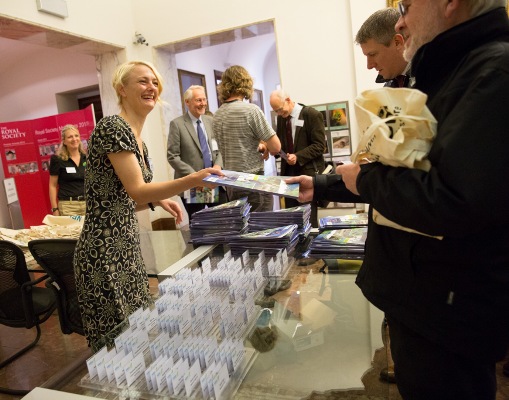
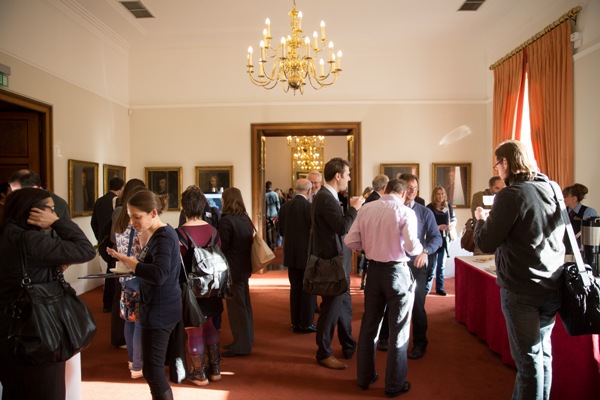
Some 160 delegates from biodiversity organisations, Local Environmental Records Centres, recording schemes, government bodies and commercial bodies involved with biodiversity, as well as private individuals concerned with recording came together at the Royal Society’s Wellcome Trust Lecture Hall on a bright, sunny day, and were greeted by NBN Trust Chairman, Professor Michael Hassell.
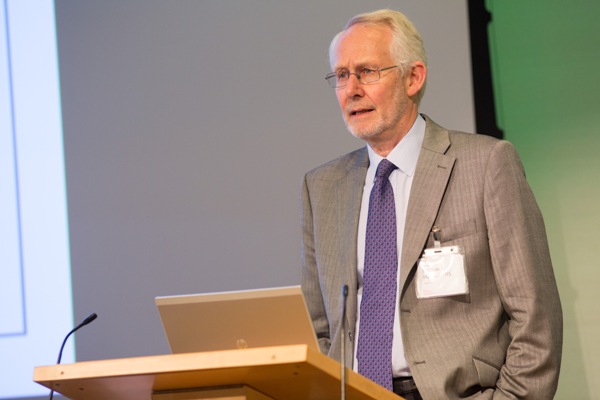
The Keynote address was given this year by the Shadow Environment Minister, Barry Gardiner MP, who also chairs the All-Party Parliamentary Group on Biodiversity. His was not an address that avoided the issues confronting the world. He recognised from the outset that a continued decline of biodiversity is real – the 2010 biodiversity targets set under the Convention on Biodiversity in 2002 had generally failed to be met, in Britain as around the world. Ideas are now shifting as to how to meet the challenge, moving away from one-species attempts to halt decline towards developing the long-standing idea of ‘natural capital’, now recognising the integrated ‘ecosystem services’ that the natural world provides and seeking to protect and enhance these. Mr Gardiner identified a key problem – the lack of recognition of the real (economic) value of the natural world in our economic policies, such that we still think of the products of the environment (e.g. water, soil fertility, breathable air) as ‘free goods’, when in fact they are worth billions. This results in the depletion of ’natural capital’ being viewed as ‘income’ on economic balance sheets, when it should be seen as a cost. How do we change this? We need to move to a new paradigm of true ‘sustainability’, with proper accounting. The National Ecosystem Assessment showed a 30% decline of the natural environment overall. Now the Government’s Natural Capital Committee is seeking to get the true value of ecosystems installed in Treasury models of economics for all UK activities. One current theme is the idea of ‘biodiversity offsetting’ for developments, which has been criticised, but which, implemented properly, could be a major benefit. It must not be seen as a licence to trash the environment. Our system of land tenure in general needs to reflect the need for land to be managed to maintain these ecosystem services. Mr Gardiner also gave an example from the management of our seas, where there is a dire need to maintain fish stocks. Understanding and recognising the integrated value of the elements (species etc.) that make up our natural environment is the key to delivering landscape-scale resilience, for which good biodiversity information is vital, which is why he welcomed the chance to address the NBN Conference. After his address one question was whether the Natural Capital Committee was doing a good job or not, and in his reply he said that, so far (and it is early days) they do seem to be doing what is needed, but the proof will be in the outcome.
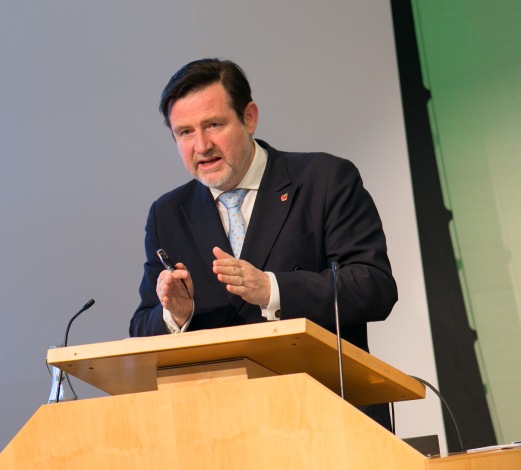

The speech given by Barry Gardiner MP will be available for download soon.
From this broad, policy-focused perspective, the main Conference proceedings began, firstly with a contribution from the commercial ecological consultancy perspective, given by Lisa Kerslake, Director of Swift Ecology. She initially emphasised that with her former background in Local Environmental Records Centres etc., she did understand the complexities of acquiring and delivering biodiversity data. She has also been involved with a joint informal Biodiversity Data Management group, convened by the (now) Chartered Institute of Ecology & Environmental Management, looking at the issues of data usability, data access and communication with other interested parties, including the National Biodiversity Network. Her perspective, of course, was that of a relatively small ecological consultancy needing to make best use of existing data to assess proposed developments etc. A first message she had for the NBN was that, in general, much of the current data available through the NBN Gateway was not actually of much use to her, partly because of the way it had been collected (not enough detail, not precise as to locality, not current enough), and also because, often, the level of access which was granted for use by organisations like hers was inadequate. Some data, indeed, had only been loaded onto the Gateway at a low level of resolution, when it actually existed as high resolution data in contributing organisations’ databases. More use was made directly of Local Environmental Records Centre data, but even here there were problems of inconsistency of service, and data reliability, let alone response times and costs. The overall result was that, in trying to do a good job, according to CIEEM guidelines, organisations like hers were often ‘punished’ for doing so, through being undercut by less scrupulous operators. However, CIEEM best practice actions are beginning to help, although further solutions are needed: local planning authorities should require proper data searches, and developers should be required to have had data searches carried out as part of their development applications. There should also be agreed levels of cut-off for data searches, so that there is a level playing field. The recent production of the British Standards Institute standard on biodiversity in planning is a good step in the right direction. Finally, proper incentives need to be given to data suppliers to free up access to their data. A comment from the floor concerned the lack of take-up of technical systems by data suppliers, and she agreed that often it was organisations and people that were at the heart of the problems, not the technical systems available.
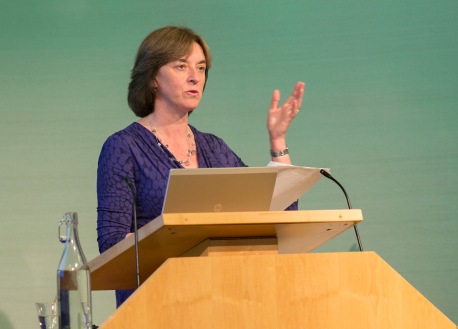
Download Lisa Kerslake's presentation
The scene shifted with the next presentation, by Richard Fox of Butterfly Conservation, who demonstrated the use being made by BC of the vast amount of data being received by the Butterfly and Moth Recording Schemes, with around 9 million records of butterflies, and over 13 million moth records. Work on both is ongoing, and some of the data (but not all) is accessible, in summary at least, through the NBN Gateway. A key issue with Lepidoptera data is the quality of data. Given the wide range of sources of these data, unevenness of data quality and coverage is potentially a problem, and Butterfly Conservation has been working with the Centre for Ecology & Hydrology etc. to develop new statistical approaches to the use of these data in order to maximise their use while avoiding the pitfalls of integral bias in the data, brought about by a range of issues, such as the increase of recorder effort over time, the impact of ‘projects’ on data collection. Despite these issues, the collected data have been vital in clearly demonstrating declines of species abundance, as well as overall shifts of populations in response to climate warming. Data access remains a problem also. Given the complex nature of the organisations underpinning butterfly and moth data and their uncertain financial support, data ownership and protection of access to Lepidoptera data remain important.
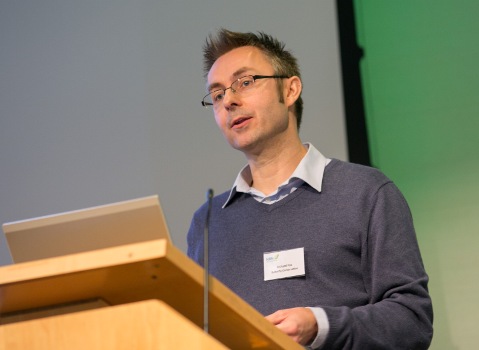
Download Richard Fox's presentation
Alan Law of Natural England followed with a look at the use of volunteer-collected marine data in supporting the process of marine conservation. Given the nature of the subject, it is not surprising, perhaps, that there are limitations to the level of engagement with recording and the availability of data. In order to achieve marine conservation, it is vital that the ‘evidence’ is available. However, despite financial constraints, over the last 10 years or so the importance of this area has increased, and there has been a tenfold increase in the number of conservation staff involved with the area. With all this work, Marine Protected Areas now cover some 25% of England’s seas (compared with only 8% of England’s land surface), although adoption of all the proposed Marine Conservation Zones has not yet been upheld, owing to a lack of data to support them. A major problem is the lack of information on the nature and extent of marine ‘habitats’, even down to the lack of an agreed system of classification, let alone enough baseline information to assess ‘change’ in species. There is also a lack of what he called ‘socio-economic data’ relating to fisheries etc., which are also important in order to justify and uphold marine protection. Volunteer-collected data in this context are therefore important, if challenging to engage with. Quality assurance of the data is difficult, and new technologies are being adopted to improve recording capabilities, such as the development of ‘apps’. However, if we are to be able to make headway with marine conservation, it is important that the ‘bar’ for accepting evidence is not unnecessarily raised too high.
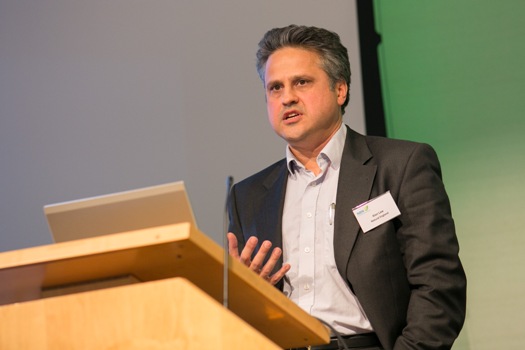
Download Alan Law's presentation
The morning session was rounded off with a characteristically lively presentation by Steve Cham of the British Dragonfly Society, who looked at challenges for the Society for the future, now that its Dragonflies in Focus Project is drawing to a conclusion with the imminent publication of its revised national Atlas, after many years of concerted survey effort. The outcome of the Project has not just been an atlas, but also other ‘products’, notably a much-enhanced dataset, and more focused species recording programmes. These will allow measurements of species change and monitoring for conservation. 98% of all their data are collected by volunteers, with over 1 million records now available. As with butterfly data, data quality is an issue, and the BDS has been effectively engaging with the NBN’s ‘Record Cleaner’ toolkit development. Issues of data bias are apparent, as are also issues of patchy coverage to some extent. He emphasised the critical role of Project support staff (the Project Officer, Steve Prentice, in particular) in supporting the Scheme, as well as the vital role of local support. Sources of bias include the effect of over-recording generated by specific initiatives or individual enthusiasm! Ways to assess ‘change’ also need to be examined carefully, with careful selection of statistical methods, as well as appropriate use of background environmental data. There also remains the problem of getting people to actually carry out ‘monitoring’ of species – because volunteers often want to record things of interest, and ideas like ‘negative records’ are difficult. Funding remains an issue (with the cessation of current project funding). Meanwhile, we must not under-estimate the value of ad hoc recording.
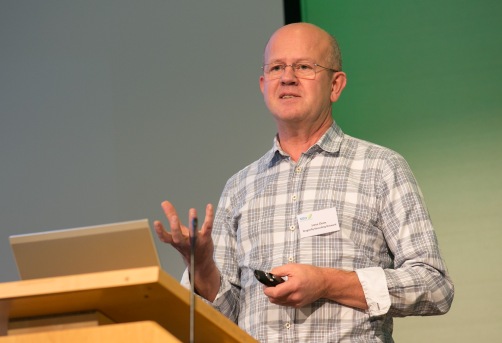
Download Steve Cham's presentation
Lunchtime networking and demonstrations
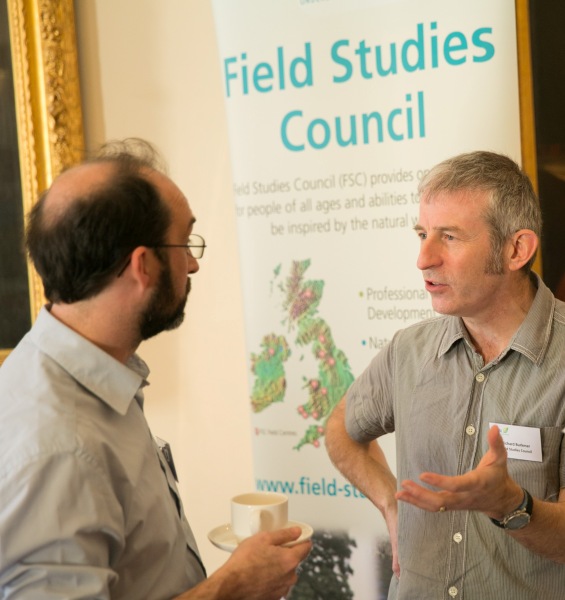
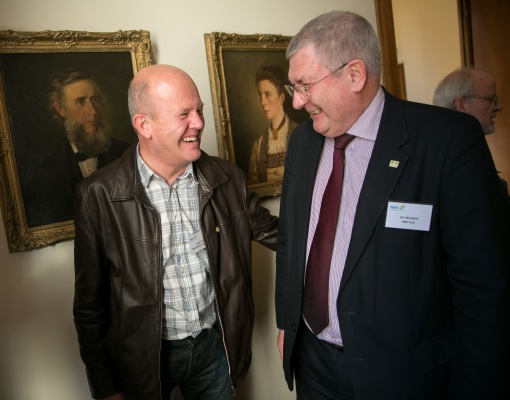
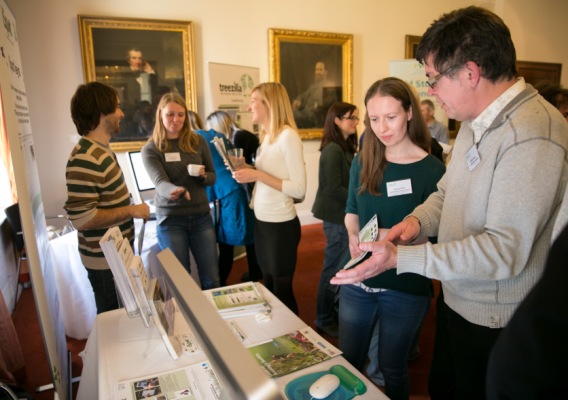
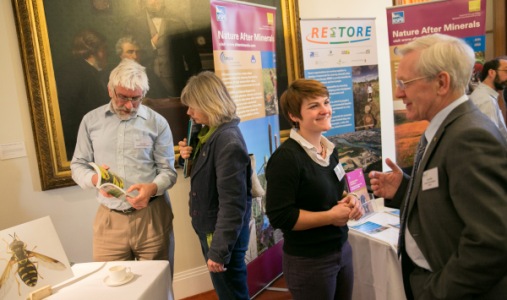
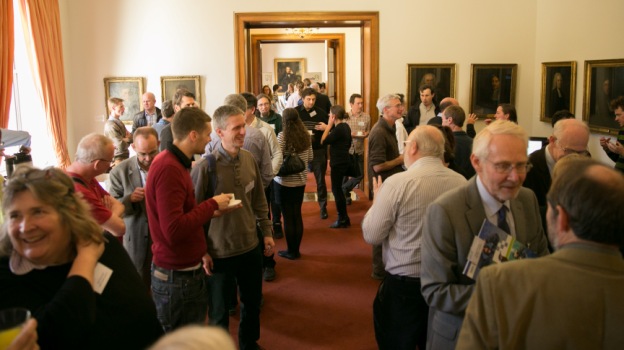
After lunch and having spent at least some time examining the various demonstrations on offer, the afternoon session started with the presentation by NBN Trust Chairman, Professor Michael Hassell, of Honorary NBN Membership to Dr Stuart Ball, joint Organiser of the Hoverfly Recording Scheme and long-term technical innovator in the development of biological recording systems generally, especially the Recorder database and also methods of large-scale data analysis.
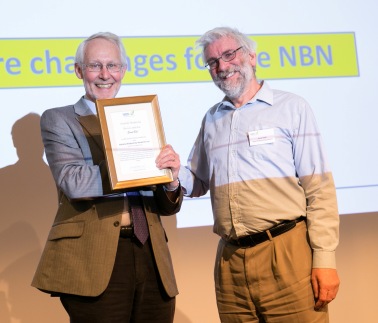
Following this, we received this year’s Sir John Burnett Memorial Lecture, given this year by Professor Bill Sutherland of Cambridge University, on the subject of ‘Big data, NBN and effective conservation’. With a visionary stance, Professor Sutherland outlined the enormous changes to biological recording brought about, and continuing to be brought about by new technologies. He gave as examples iSpot, iBat, and current developments in automated identification, using DNA bar-coding, including the idea of mass DNA sampling of the environment, which is already possible. The actual and potential result of all this recording effort is the accumulation of an enormous (and exponentially increasing) amount of data. So, what do we do with it all? The way forward, he proposed, is the automated integration of different kinds of data and their analysis, with new means of presenting the outputs of these for public information, research and policy formulation. The NBN, as a whole, is in the position of being a potentially key element in this overall system, and can therefore make a major contribution to the development of the Intergovernmental Platform on Biodiversity and Ecosystem Services. This will make use of iterative data analysis techniques to identify and monitor changes in the environment generally. In order to maintain this input, though, the NBN will need to develop and make use of good, instant feedback processes to encourage and sustain community engagement.
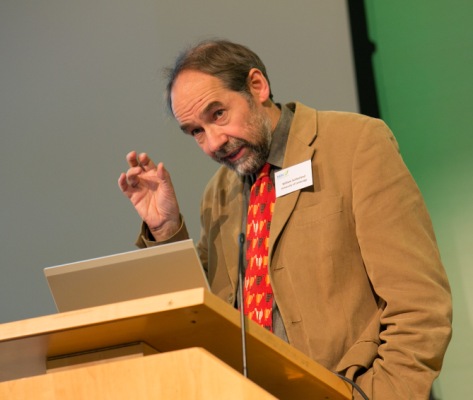
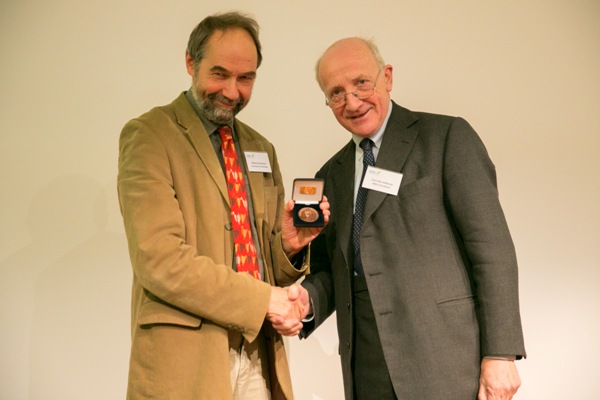
Download Bill Sutherland's presentation
Paul Wilkinson of The Wildlife Trusts brought us back to earth with his talk on ‘Securing Nature’s recovery – the knowns, unknowns and need to knows’. Speaking from the viewpoint of practising nature conservationists, he reflected on the aims of the ‘Living Landscapes’ Projects that the Trust movement has been implementing. For these to work, the gathering of data needs to evolve in relation to its use. The priorities for recording need to reflect the ‘ecosystem services’ model. We must understand how much data we need, and about what. Recording and monitoring at a site-specific level is increasingly vital, but we also need to be able to integrate these data to understand the needs at a landscape scale. Using complex data in this way to deliver good outcomes will require a lot of work, and in order to sustain this, we need to ensure support for the broader recording effort.
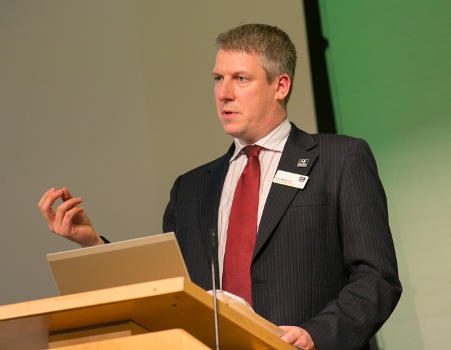
Download Paul Wilkinson's presentation
Ed Mackey of Scottish Natural Heritage spoke to us from a Scot's perspective about needs and priorities for the new 2020 vision, following the Nagoya round of the Convention on Biodiversity in 2010. Are past systems of recording and monitoring fit for purpose? Are the data being gathered secure, and are they properly accessible for use? Above all, what influence do these data actually have over environmental management actions? NBN data are now an important tool in UK biodiversity policy work, such as JNCC’s Habitats Directive reporting, but we need to greatly improve access to data and their interpretation in order to deliver real benefits. The development of information ‘platforms’ (as mentioned in Professor Sutherland’s lecture) and the use of Europe-wide standards of assessment, such as the EUNIS habitat classification system will help. These will answer the key questions of what we need to know, how we can interact with these data effectively, and how we can share a vision of what we aim to achieve.
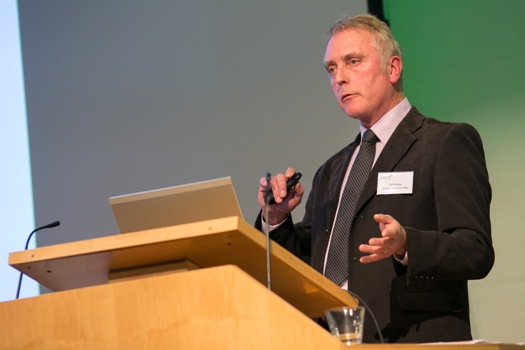
Download Ed Mackey's presentation
The final presentation was a lively double-act to keep us awake before tea, delivered by Sue Townsend and Richard Burkmar, from the Field Studies Council, looking at ‘joining the dots for biological recording training’. The FSC has been engaging with people about field study and identification for 70 years, and especially with school age children. As a charity, its income is highly dependent on this source of funding, and recent reductions in educational engagement with field biology are a concern. With project-led funding, there is also a built-in short term approach, and a tendency towards less of an ‘expert-led’ approach to more of a beginner’s level approach, with the recent success of the FSC’s fold-out id. charts as an example. Against this backdrop, and a general recognition of a reduction in field skills, the FSC has embarked on a series of projects to enhance the situation. These have included an Invertebrate Challenge Project (looking at invertebrate identification training), with the result that 10 new County recorders for insect groups in Shropshire were recruited since 2009. This was followed up with a broader Biodiversity Fellowship scheme, with short-term Heritage Lottery Funding, which used National Recording Scheme expertise to deliver training. Its short-term support leaves it vulnerable as an approach, but is has begun to use social media as a mechanism to keep going. More recently the Tomorrow’s Biodiversity Project is getting off the ground, with a longer-term consultation exercise on what is needed to support training in the longer term. Comments from the floor included the need to ‘train the trainers’, which has been ongoing, but needs more work.
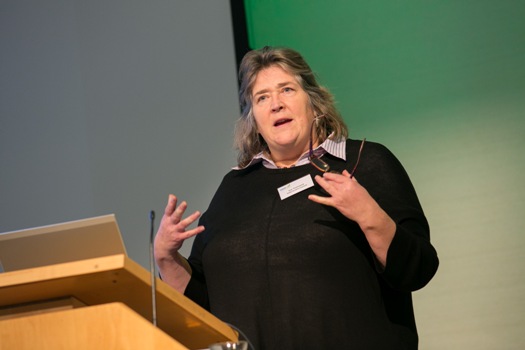
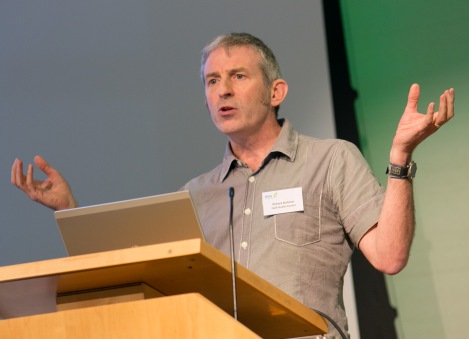
Download Sue Townsend's and Richard Burkmar's presentation
From these presentations, it is clear that, if biodiversity needs are to be met with robust, ongoing wildlife data, much still needs to be done, giving the NBN as a whole significant challenges for the future.
The meeting closed at 4.30 with a brief summing up by the NBN Chairman, followed by tea and networking.
Report written by Trevor J. James, NBN Trust Advisor
If you would like to take part in our online survey to gather feedback on the NBN Conference, you can do so by clicking here.
The videos of the day
Watch the video of the morning session on YouTube by clicking below
Timings of the morning session are as follows:
Opening remarks by Professor Michael Hassell 00.00 – 02.30
Chair of the morning session Jim Munford 02.30 – 03.25
Barry Gardiner MP – 03.26 – 38.46
Lisa Kerslake – 38.47 – 01.09.52
Richard Fox – 01.09.57 – 01.39.54
Alan Law – 01.40.00 – 02.11.17
Steve Cham – 02.11.18 – 02.45.44
Watch the video of the afternoon session on YouTube by clicking below
Timings of the afternoon session are as follows:
Opening remarks and Honorary membership award – 00.00 – 03.35
Sir John Burnett memorial lecture, Professor Bill Sutherland – 03.40 – 36.47
Paul Wilkinson – 36.50 – 01.01.22
Ed Mackey – 01.01.29 – 01.37.26
Sue Townsend & Richard Burkmar – 01.37.33 – 02.09.39
Closing remarks – 02.09.40 – 02.10.29
